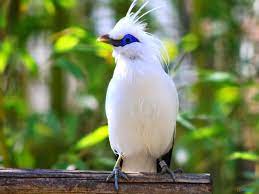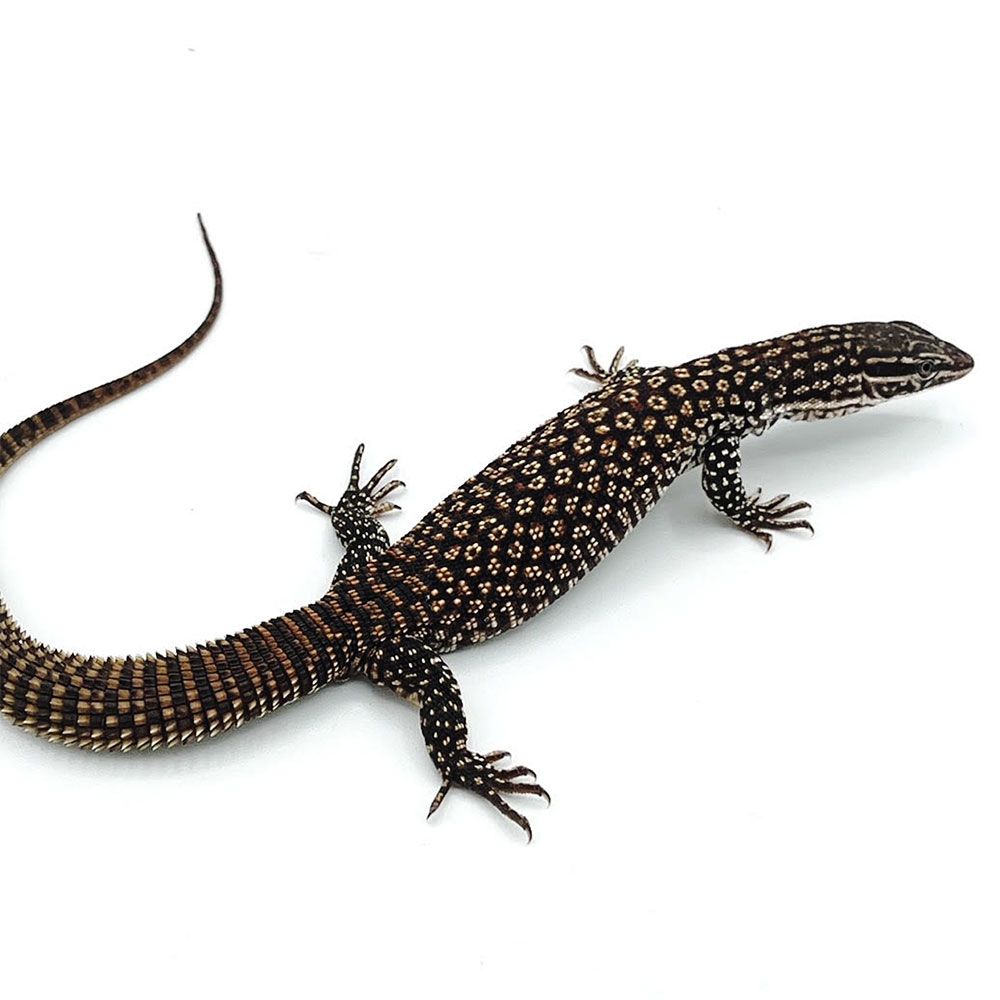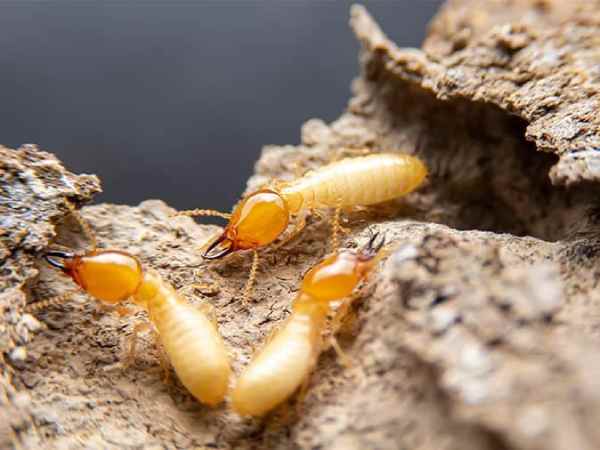Bali, Indonesia, is renowned for its breathtaking landscapes, vibrant culture, and pristine beaches. However, beyond the bustling markets and lush rice terraces lies a hidden world of fascinating wildlife. In this article, we embark on a journey to discover the remarkable Animals of Indonesia that call Bali home.
From the elusive and endangered Bali starling to the captivating marine life found in the surrounding waters, Bali’s biodiversity is nothing short of astonishing.
Nestled between the Indian and Pacific Oceans, Bali’s unique geography has given rise to a rich tapestry of ecosystems, making it a hotspot for diverse wildlife. We’ll delve into the lush jungles that house the playful macaques and the mysterious nocturnal world of flying lemurs.
Additionally, we’ll explore the underwater wonders of the coral reefs teeming with colorful fish and majestic manta rays. Join us as we unveil the enchanting creatures that make Bali a true paradise for both nature enthusiasts and wildlife lovers alike.
The Rich Biodiversity of Bali
Bali, often dubbed the “Island of the Gods,” is as much a haven for wildlife as it is for tourists seeking stunning landscapes and rich culture. Its diverse range of ecosystems, from mist-covered rainforests to crystal-clear seas, creates an environment where biodiversity thrives.
Bali’s geography, nestled between the Indian and Pacific Oceans, plays a pivotal role in nurturing this biological treasure trove. The island’s flora and fauna are as varied as its topography, with countless species calling it home. From the smallest insects to the largest mammals, Bali offers a spectacle of life that captivates naturalists and wildlife lovers alike.
Iconic Wildlife Species in Bali
- Bali’s Endemic Species
Bali Starling (Leucopsar rothschildi):

The Bali Starling, also known as the Bali Myna, is a captivating and critically endangered bird species endemic to Bali. This striking avian beauty is instantly recognizable with its pristine white plumage and striking blue eye ring.
Its rarity and unique appearance have made it a symbol of Bali’s natural heritage. Unfortunately, the Bali Starling faces severe threats from habitat loss and illegal wildlife trade, which have significantly reduced its population in the wild. Conservation efforts, including breeding and release programs, aim to save this iconic species from extinction and protect its habitat in Bali’s dwindling forests.
Bali Tiger (Panthera tigris balica):

The Bali Tiger, once a majestic subspecies of the Javan tiger, is a tragic emblem of extinction. This feline roamed the lush jungles of Bali but fell victim to relentless hunting and habitat destruction, leading to its extinction in the early 20th century. This loss underscores the importance of conservation and reminds us of our responsibility to protect vulnerable species and their habitats.
Bali Black Giant Squirrel (Ratufa baliensis):

The Bali Black Giant Squirrel is a captivating endemic rodent known for its distinctive black fur and large size. This arboreal species is a denizen of Bali’s lush forests and is vital to the island’s ecosystem. As it plays a role in seed dispersal, it contributes to the forest’s regeneration. However, deforestation and habitat fragmentation threaten this unique squirrel’s survival, underscoring the importance of preserving its habitat for future generations to admire and study.
Bali Krait (Bungarus bungaroides):

The Bali Krait is a venomous snake species endemic to Bali, showcasing the island’s rich biodiversity, even among reptiles. It belongs to the elapid family and is known for its striking black-and-white coloration. Unfortunately, like many snakes worldwide, it faces habitat degradation and persecution due to misunderstandings and fears. Proper education about its role in the ecosystem and conservation measures are vital to ensure its continued existence in Bali’s natural landscapes.
Bali Spiny Lobster (Panulirus penicillatus):

Beneath the turquoise waters surrounding Bali lies the Bali Spiny Lobster, a unique and commercially important species. It thrives in the vibrant coral reefs of the region and sustains local fisheries. Sustainable fishing practices are essential to safeguard this species and the livelihoods it supports, emphasizing the importance of marine conservation efforts.
Bali Rice Frog (Fejervarya baliensis):

The Bali Rice Frog is a fascinating amphibian species endemic to Bali. It can adapt to various aquatic and semi-aquatic habitats, making it a resilient inhabitant of the island’s diverse landscapes. Its calls are a familiar sound in the countryside and rice paddies of Bali. Despite its adaptability, habitat destruction remains a significant concern for this frog, highlighting the importance of preserving Bali’s natural wetlands and waterways.
Bali Ground-dove (Gallicolumba tristigmata):

Bali’s forests are graced by the presence of the Bali Ground-dove, a small bird species with subtle yet distinctive plumage. This endemic bird is part of Bali’s avian tapestry and represents the island’s unique avifauna. Conservation efforts aimed at protecting its habitat are essential to ensure that the Bali Ground-dove continues to coexist harmoniously with the island’s human inhabitants.
Bali Bronzeback Snake (Dendrelaphis kopsteini):
The Bali Bronzeback Snake is a non-venomous species that showcases the island’s reptilian diversity. Its vibrant colors and arboreal habits make it a fascinating resident of Bali’s forests. While it doesn’t pose a direct threat to humans, habitat degradation and fragmentation impact its survival. Conservation measures should consider not only charismatic megafauna but also smaller species like the Bali Bronzeback Snake to maintain the balance of Bali’s ecosystems.
B. Commonly Found Wildlife
Long-tailed Macaques (Macaca fascicularis):

Long-tailed Macaques are charismatic and highly social monkeys that are a common sight in Bali’s lush forests and temple grounds. With their long tails and expressive faces, they often capture the attention of tourists and locals alike.
These monkeys play a crucial role in the ecosystem by dispersing seeds and helping to maintain forest health. However, their close interactions with humans can sometimes lead to conflicts, especially when they become accustomed to human food. Efforts to educate the public on responsible wildlife interactions are important for both the monkeys’ well-being and human safety.
Asian Water Monitor Lizards (Varanus salvator):

Bali’s waterways and rice fields are often shared with Asian Water Monitor Lizards, impressive reptiles that can grow quite large. Their prehistoric appearance and ability to adapt to various habitats make them a fascinating presence in the island’s ecosystem.
While they are generally harmless to humans, these lizards play a vital role in controlling insect populations and helping to maintain the balance of the local ecosystem. Conservation measures are important to ensure their continued coexistence with human communities in Bali.
Butterflies:

Bali’s gardens and forests are adorned with a breathtaking array of butterflies, showcasing nature’s artistry with their vibrant colors and delicate wings. These winged wonders contribute to pollination and are integral to the island’s ecosystem. Bali’s butterfly species include the Common Mormon, Blue Tiger, and Lime Butterfly, among others. Preserving their habitats and food sources is essential to sustaining these enchanting insects and their important ecological role.
Geckos and Anoles:

Bali is home to various gecko and anole species that often take up residence in homes and buildings. These small reptiles are appreciated for their role in pest control, as they help keep insect populations in check. Their unique vocalizations and distinctive appearances add to Bali’s rich biodiversity. Responsible cohabitation and conservation practices are crucial to ensure the well-being of these helpful and intriguing creatures.
Tropical Birds:

Bali’s tropical avian residents, such as the Javan Kingfisher and White Heron, bring color and song to the island’s landscapes. Birdwatchers flock to Bali to catch a glimpse of these beautiful creatures in their natural habitat. However, habitat loss and illegal wildlife trade pose threats to these birds. Conservation initiatives aim to protect their habitats and ensure that future generations can continue to enjoy the beauty of Bali’s tropical birds.
Rice Paddy Frogs:

Rice Paddy Frogs, adapted to Bali’s agricultural landscapes, is a familiar presence in the island’s rice fields and wetlands. These amphibians play a crucial role in controlling insect populations, making them valuable allies for local farmers. Their distinct croaking calls are often associated with Bali’s rural ambiance. However, like many amphibians worldwide, they are susceptible to habitat destruction and pollution. Efforts to safeguard their habitats and promote sustainable farming practices are essential to ensure their continued contribution to Bali’s ecosystem.
Coral Reefs:

Bali’s coral reefs are vibrant underwater ecosystems teeming with marine life, including colorful corals, reef fish, sea turtles, and even reef sharks. These diverse and fragile environments attract snorkelers and divers from around the world. Conservation efforts, such as marine protected areas and responsible tourism practices, are crucial for preserving these magnificent reefs and the species that rely on them.
Insects and Arachnids:

Bali’s diverse landscapes are home to a wide variety of insects and arachnids, from intricate dragonflies to the impressive giant wood spider (Nephila maculata). While some may seem inconspicuous, they play essential roles in pollination, decomposition, and maintaining ecological balance. Appreciating and protecting these often overlooked creatures is vital for the overall health of Bali’s ecosystems.
Cattle and Water Buffaloes:

Domesticated cattle and water buffaloes are an integral part of Bali’s agricultural traditions. These animals play essential roles in farming and cultural ceremonies, such as the Subak system for rice cultivation and various religious rituals. Their presence highlights the deep connection between humans and animals in Bali’s rural communities.
Bali Dogs:

Bali Dogs, a unique and distinct breed, are an inseparable part of Balinese life. Known for their small size and distinctive features, they have long been companions to locals and are often seen in homes, villages, and temples. While they face various challenges, including overpopulation and health issues, they hold a special place in Balinese culture and continue to be cherished by the island’s residents. Efforts to promote responsible pet ownership and improve their welfare are ongoing to ensure their well-being in Bali’s communities.
Threats to Bali’s Animal Diversity
Bali’s precious biodiversity faces a barrage of threats that demand immediate attention. As urbanization surges, pristine habitats are razed to make way for resorts and agriculture, leaving wildlife with shrinking territories. Poaching remains a grim concern, with illegal wildlife trade threatening the survival of iconic species. Pollution from runoff and climate change-induced coral bleaching also jeopardize marine ecosystems.
Conservation Efforts in Bali
In response to these threats, Bali has witnessed a surge in conservation initiatives. Organizations, working hand in hand with local communities, have taken up the mantle of habitat restoration, anti-poaching patrols, and educational outreach programs. Protected areas like West Bali National Park and Bali Barat National Park have been established to serve as sanctuaries for endangered species.
Wildlife Tourism in Bali
Wildlife tourism has gained popularity in Bali, with many tourists eager to witness the island’s diverse fauna. Ethical tourism practices are strongly encouraged to minimize the negative impact on wildlife and their habitats. Responsible wildlife sanctuaries, eco-friendly tours, and educational experiences offer opportunities for travelers to appreciate Bali’s wildlife while actively supporting its conservation.
The Future of Bali’s Animal Diversity
The future of Bali’s animal diversity depends on the collective efforts of conservationists, local communities, and government authorities. Sustainable development practices, stricter enforcement of wildlife protection laws, and ongoing public awareness campaigns are vital for preserving this precious natural heritage. With the unwavering dedication of all stakeholders, Bali’s biodiversity can continue to thrive for generations to come.
Final Words
Bali’s rich biodiversity and iconic species are treasures that must be protected for the well-being of the planet and future generations. While facing numerous challenges, Bali’s conservation efforts and responsible tourism initiatives offer hope for a brighter future where this Indonesian island remains a sanctuary for its remarkable wildlife. As we celebrate its natural wonders, we must also recognize our responsibility to ensure the longevity of Bali’s unique animal diversity.
Reference:
- https://www.dailymail.co.uk/news/article-12192941/Bali-Lombok-wildlife-parks-animals-living-inhumane-conditions-Indonesia.html
- https://people.uwec.edu/jolhm/eh3/group10/Tiger.htm
- https://www.balisafarimarinepark.com/indonesia-native-animal/

Zahra Makda
Growing up enjoying the beauty of my village, a good passion for nature developed in me from childhood. Following my passion for the natural world, I have chosen zoology for my graduation, during my undergraduate degree, I participated in many nature trails, bird watching, rescues, training for wildlife conservation, workshop, and seminars on biodiversity. I have a keen interest in invertebrate biology, herpetology, and ornithology. Primary interests include studies on taxonomy, ecology, habitat and behavior.









